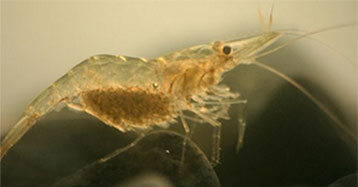Historic Chemical Contaminants
NCCOS delivers scientific products and services designed to inform and improve the management of chemical contaminants in the coastal zone. Contaminants of concern for coastal ecosystems include legacy compounds (e.g. DDT and PCBs), current- use chemicals (e.g. pesticides and PAHs), and emerging chemicals (e.g. pharmaceuticals and personal care products, nanomaterials, microplastics, and PFAS). These chemicals may be hazardous to both environmental and human health, and threaten coastal economies. NCCOS measures levels of chemicals in coastal water, sediments, and fish and shellfish tissues in order to monitor the extent of and trends in contamination. Concurrent ecotoxicology studies in laboratory and mesocosm systems serve to define lethal and sublethal effects on marine and estuarine species and allow NCCOS to link chemical exposure to chemical effects.
Contaminant Monitoring and Assessment
Extreme weather events are becoming increasingly common and can significantly alter the distribution of chemical
contaminants. Flooding events can cause inundation of municipal sewage systems, landfills, and agricultural and industrial
areas, potentially mobilizing a range of chemical and biological contaminants such as coal ash, pesticides, polycyclic aromatic
hydrocarbons (PAHs), metals, nutrients, and bacterial pathogens into coastal waterways through runoff and these changes
may pose a risk to aquatic and human health. NCCOS plays a key role in quantifying the risks of coastal inundation to estuarine
ecosystems and coastal economies. Baseline ecological assessments are an important tool in predicting and responding to extreme events.
Chemical Contaminant Toxicity
Estuarine systems are considered especially sensitive to climate change, as they are already subject to considerable anthropogenic stress, including land use changes, biological contamination (non-native species and pathogens), and chemical pollution. Climate change effects may intensify the negative effects of anthropogenic stressors in estuaries. Changes in climate variables such as temperature, salinity, and pH can influence chemical exposures, the physiology of organisms, and the response of organisms to chemicals. Toxicity testing for regulatory purposes is conducted under standard conditions of light, temperature, salinity, etc., which may not reflect real environmental exposures. NCCOS scientists have been incorporating climate factors into their assessment of oil spills, pesticide exposures, and PFAS compounds. By expanding the climate conditions under which we conduct aquatic toxicity testing, we can improve environmental risk assessment of chemical contaminants and management capabilities under changing climate conditions.
Effects of Climate Factors
The changing climate is altering how contaminants react within the environment. NCCOS scientists are investigating how temperature, ultraviolet rays, heavy precipitation events, and other factors can change how the natural environment and organisms absorb and respond to chemical contaminants.
 Official websites use .gov
A .gov website belongs to an official government organization in the United States.
Official websites use .gov
A .gov website belongs to an official government organization in the United States. Secure .gov websites use HTTPS
A lock or https:// means you’ve safely connected to the .gov website. Share sensitive information only on official, secure websites.
Secure .gov websites use HTTPS
A lock or https:// means you’ve safely connected to the .gov website. Share sensitive information only on official, secure websites.



